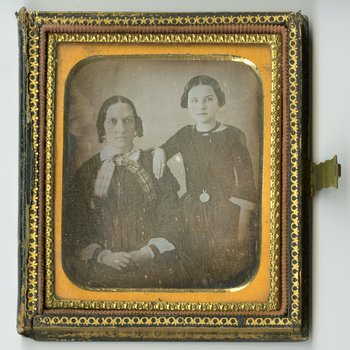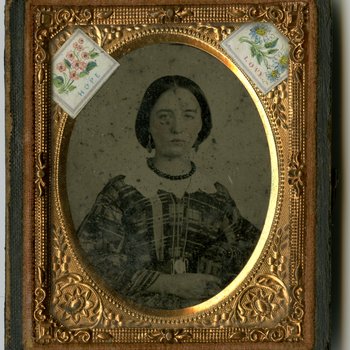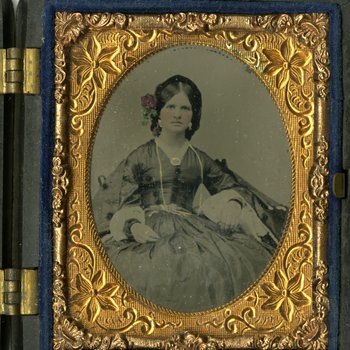Early photographic processes were tedious and expensive. Technology changed quickly though, and each new advancement made photography faster and easier for the photographer while making it more affordable for the customer. As a result, increasing numbers of people were able to have their portraits taken.
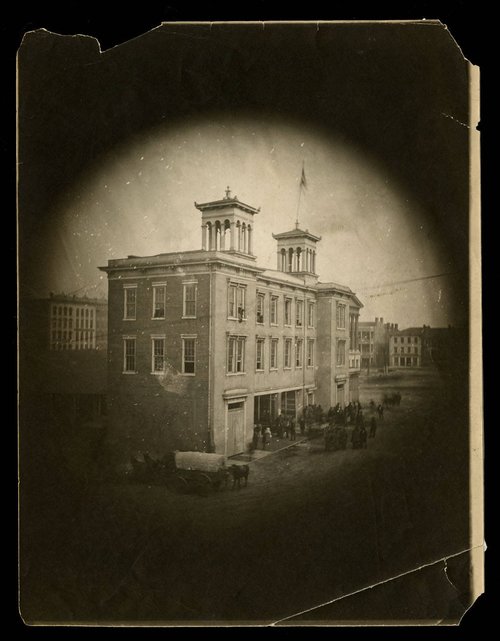
Photograph of the Market House in the Public Square taken with a pinhole camera, Nashville, ca. 1860s. Library Photograph Collection. ID: 27654.
Pinhole cameras are a type of camera obscura that use a small hole instead of a lens to expose the image. The camera obscura effect is a technique dating back to ancient times. It occurs when light enters a dark box through a tiny hole projecting an outside scene onto the wall opposite the pinhole.
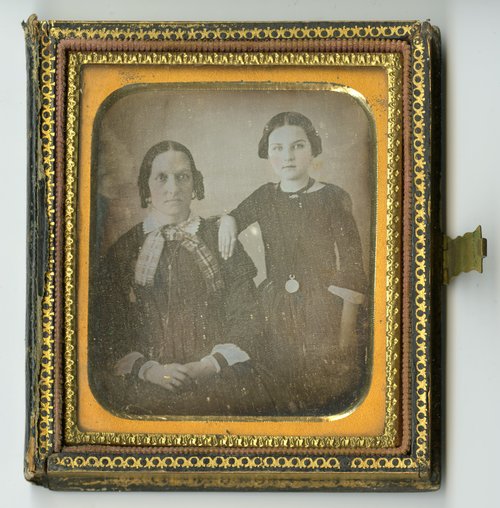
The case for this daguerreotype is elaborate mother-of-pearl with the side designed to imitate the spine of a book. Daguerreotype of Davis family, undated. Looking Back: The Civil War in Tennessee Collection. ID: sull006.
A daguerreotype was the first commercially successful form of photography. Named for inventor Louis-Jacques-Mandé Daguerre of France, they were printed on silver-coated copper plates and developed using fumes of mercury. The image appears as a positive when viewed while reflecting a dark background and as a negative when reflecting a light background. They were often placed in elaborate cases due to their fragility. Daguerreotypes were very popular during the 1840s and 1850s.

Ambrotype of an unidentified woman wearing a Union officer’s belt buckle, Monroe County, Kentucky, ca. 1860s. Looking Back: The Civil War in Tennessee Collection. ID: over057.
An ambrotype was a form of photography that succeeded the daguerreotype and was patented in 1854 by James Ambrose Cutting. The ambrotype was an image made on a glass plate coated with a chemical solution. The photographs were underexposed and underdeveloped negatives so that when viewed against a dark background, they appeared as positive images. Because they didn’t use copper plates, they were less expensive to produce than daguerreotypes.
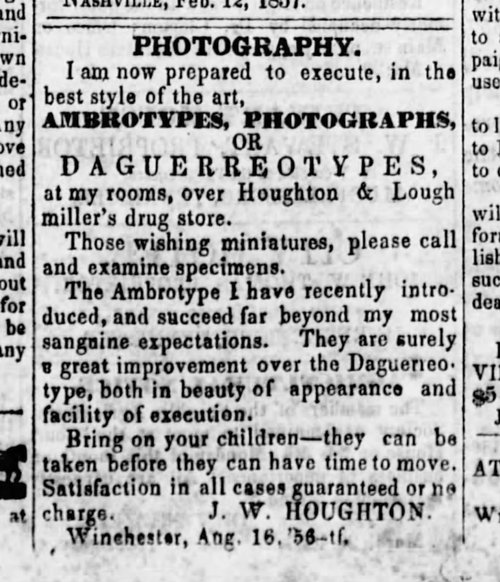
In this advertisement, photographer J. W. Houghton touts the great improvement of the newly introduced ambrotype over the daguerreotype.
Home Journal newspaper, Winchester, Tennessee, March 20, 1857. Library & Archives Microfilm Collection.
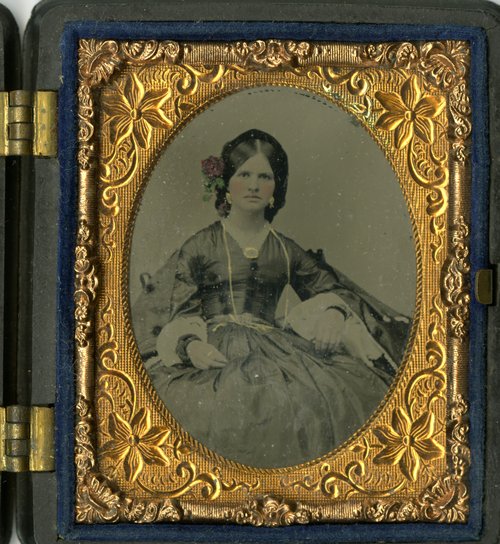
Hand-colored tintype of an unidentified woman, ca. 1860s. Looking Back: The Civil War in Tennessee Collection. ID: wash166.
Tintypes were sturdier and more economical than daguerreotypes and ambrotypes. The tintype was produced by applying a chemical solution to a thin, black-enameled metal plate. Similar to the ambrotype, the tintype was a negative which, when viewed against the black plate, appeared as a positive image. Because they were printed on thin iron plates, they did not require cases like earlier forms of photography, though they were sometimes placed in them anyway.


